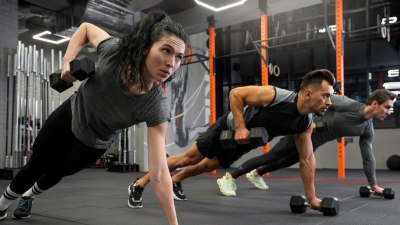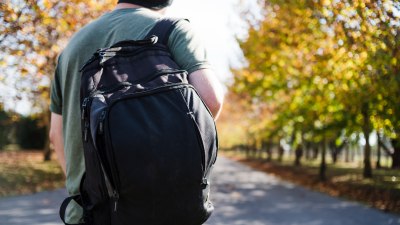How Seasonal Weather Affects Personal Fitness Routines and Goals
Discover how seasonal changes impact your fitness habits and set realistic fitness goals all year round.

Seasonal weather greatly influences personal fitness routines and goals, affecting everything from motivation to workout choice. Each season brings with it unique challenges and opportunities for fitness enthusiasts.
Spring: A Season of Renewal
As the cold winter months fade away, spring ushers in warmer temperatures and blooming nature, which can reinvigorate your fitness routine. Longer daylight hours create a prime opportunity for outdoor activities. Many individuals find that their motivation increases during spring, inspiring them to set new fitness goals. Participating in spring sports such as running, cycling, or hiking helps to capitalize on the pleasant weather. Group activities like joining a running club can also promote accountability, making it easier to stick to fitness plans.
In spring, outdoor fitness classes become popular. Many gyms offer boot camps, yoga sessions in parks, and sports leagues. You might consider setting progressive goals as you transition from indoor workouts to outdoor sessions. This includes building stamina with longer runs or increasing weights in strength training as your energy levels rise with the season.
Summer: Embrace the Heat
Summer introduces its own set of challenges. Focusing on hydration is vital as temperatures soar. Early mornings or evenings become the best times for outdoor workouts to avoid the midday heat. Many people gravitate towards water-based activities like swimming, paddleboarding, or even water aerobics, which provide excellent options to stay active while cooling down.
Despite the distractions that summer vacations might present, setting clear fitness goals can help maintain focus. For those who want to improve endurance, summer races often encourage people to maintain their training schedules. Fitting in shorter, high-intensity workouts during the week can be effective. Additionally, the summer season often allows for more flexible scheduling, opening up opportunities for increased physical activity.
Fall: Transitioning to Coolness
As the autumn leaves begin to fall, temperatures also drop, allowing many to return to outdoor workouts comfortably. Fall is often celebrated for its ideal running weather; cooler temperatures make it easier to engage in longer workouts. Many sports leagues restart in fall, offering excellent ways to stay socially active while meeting fitness goals. Also, the return to routine that often accompanies the start of the school year can be an opportunity to reassess personal fitness objectives.
Consider setting goals that align with local events, such as charity runs or community sports leagues that take advantage of the beautiful fall weather. The ambiance of changing leaves can elevate your motivation, as many people seek out nature preserves for hikes or biking. Fall is also an excellent time for strength training, as the cooler air allows for more comfortable indoor workouts.
Winter: Finding Motivation
Winter can be the most challenging season for maintaining fitness routines. With shorter days and cold weather, motivation can dwindle. However, there are various ways to combat these challenges. Indoor activities flourish during winter months—gyms become more crowded as people migrate indoors to avoid the cold.
To maintain a consistent workout schedule, focusing on setting achievable indoor goals is essential. This could involve trying a new fitness class, focusing on strength training to build muscle before spring, or even taking up winter sports like skiing or ice skating. Home workouts can also surface as a reliable alternative, especially with online platforms providing diverse classes from strength training to yoga.
Adapting Goals Throughout the Year
As seasons change, so should your fitness goals. It's essential to personalize your approach to fitness, taking into account the effects that weather has on your plans and motivation. Aim for a balanced routine that incorporates a mixture of outdoor and indoor exercises suitable for your environment. For instance, in the spring and fall expand your outdoor activities, while making adjustments during summer and winter months with suitable indoor alternatives when required.
One effective strategy is to set a primary fitness goal for the year and then break it down by season. For example, if your goal is to run a marathon, you might focus on base-building in the winter, speed work in the spring, endurance in the summer, and tapering off in the fall with a couple of half marathons.
More than Just Weather: Mental and Emotional Factors
Seasonal weather affects not only physical aspects but also mental and emotional wellbeing. Seasonal Affective Disorder (SAD) is a common issue during winter months, where lack of sunlight can lead to decreased motivation. Engaging regularly in physical activity is an excellent countermeasure to these feelings. Setting small, manageable fitness targets can help in overcoming this hurdle.
On the other hand, the excitement of spring and fall can create a can-do attitude, which can be harnessed as motivation for maintaining fitness routines. Psychological factors like seasonal transitions can influence mood and, subsequently, adherence to fitness routines.
Embrace Seasonal Changes
Understanding how seasonal weather influences your personal fitness routines can make a significant difference in achieving your goals. By embracing the differences each season brings, you can adapt your routines, stay motivated, and ultimately maintain a healthy and active lifestyle throughout the year. The key lies in being flexible and recognizing when to adjust your approach to fit the environment, ensuring you continue progressing in your fitness journey no matter what the weather may bring.











